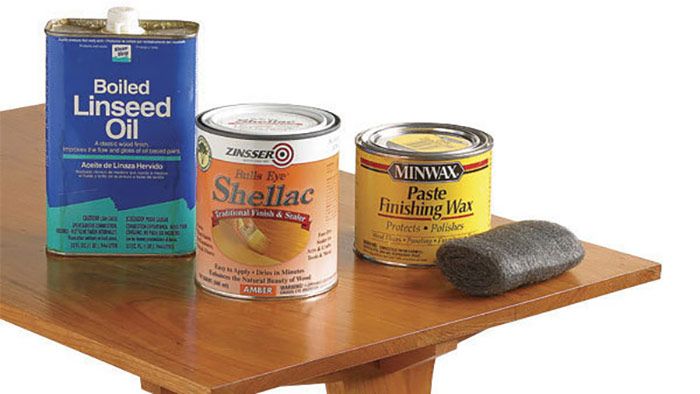[ad_1]
Linseed oil—pressed from the seeds of the flax plant—has been utilized by woodworkers and artists for 1000’s of years. It’s versatile and cheap. In its uncooked type, combined with pigment, it makes artist’s oil paint. When heated, it makes an excellent penetrating wooden end.
Linseed oil is called a drying oil as a result of it reacts with oxygen and finally types a tough movie. Chemists name the method polymerization. (Tung oil, from the seeds of the tung tree, is the opposite broadly used drying oil.) Canola oil and olive oil are two kinds of nondrying oil. They by no means solidify to type a movie, which is why they’re higher for cooking than cabinetmaking. Between these extremes are semi-drying oils, resembling soybean and safflower, that are used to make varnish.
There are a number of types of linseed oil. The one which woodworkers most frequently use is boiled linseed oil, or BLO. It makes a superb, sturdy end that darkens because it ages. Tung oil is much more sturdy and darkens the wooden much less.
BLO can also be one of many elements within the combination referred to as Danish oil, together with varnish and a solvent resembling turpentine or mineral spirits. The varnish permits Danish oil to type a thicker movie than BLO alone. Waterlox is an identical oil-varnish combination, produced from each linseed oil and tung oil.
Regardless of its identify, BLO isn’t boiled, however it’s heated. Most manufacturers of BLO are combined with heavy-metal driers, sometimes salts of cobalt and manganese. These components pace BLO’s response with oxygen, permitting it to dry in a day or so. Uncooked linseed oil, with out the heating and the components, can take weeks to dry.
Like different oil finishes, BLO is insanely simple to use: Hand-sand the piece you’re ending to at the least 220-grit. Wipe on the oil with a cotton rag and wipe off the surplus. Wait a day, calmly burnish the surfaces with a grey nonabrasive pad, and apply one other coat of oil. Repeat till you get the texture and sheen you need. Simply don’t anticipate an oil end to construct like shellac or wipe-on poly. The oil penetrates the wooden as an alternative of sitting on prime of it.
Oil finishes current the hazard of spontaneous combustion. Wadded-up oily rags will take in oxygen, beginning a chemical response that generates sufficient warmth to make the rags burst into flame. That’s a certainty with BLO, much less of a certainty with tung oil. Some sources preserve that tung oil isn’t prone to burn as a result of it has a excessive flash level. However why threat a hearth? In the event you’re utilizing a end that comprises BLO or tung oil, unfold the rags out on the bottom or dangle them on a rack till they’re dry. Solely then are you able to safely discard them.
There’s one different concern with BLO: meals security. As a result of most manufacturers of BLO include heavy-metal driers, they aren’t thought-about meals secure. So in order for you an oil end on a butcher block or reducing board, or on a carved spoon or a turned serving bowl, select one thing apart from BLO. For instance, The Actual Milk Paint Co. sells a pure tung oil that’s meals secure. Woodturner Mike Mahoney sells a heat-treated walnut oil that dries rapidly and is meals secure. Or, use a model of linseed oil that doesn’t include probably hazardous elements. These embrace finishes from Tried & True and Odie’s Oil (a model favored by woodturners). The maker of Waterlox says the end is food-safe when dry.
For extra info on oil finishes, try our Ending Information.
[ad_2]


